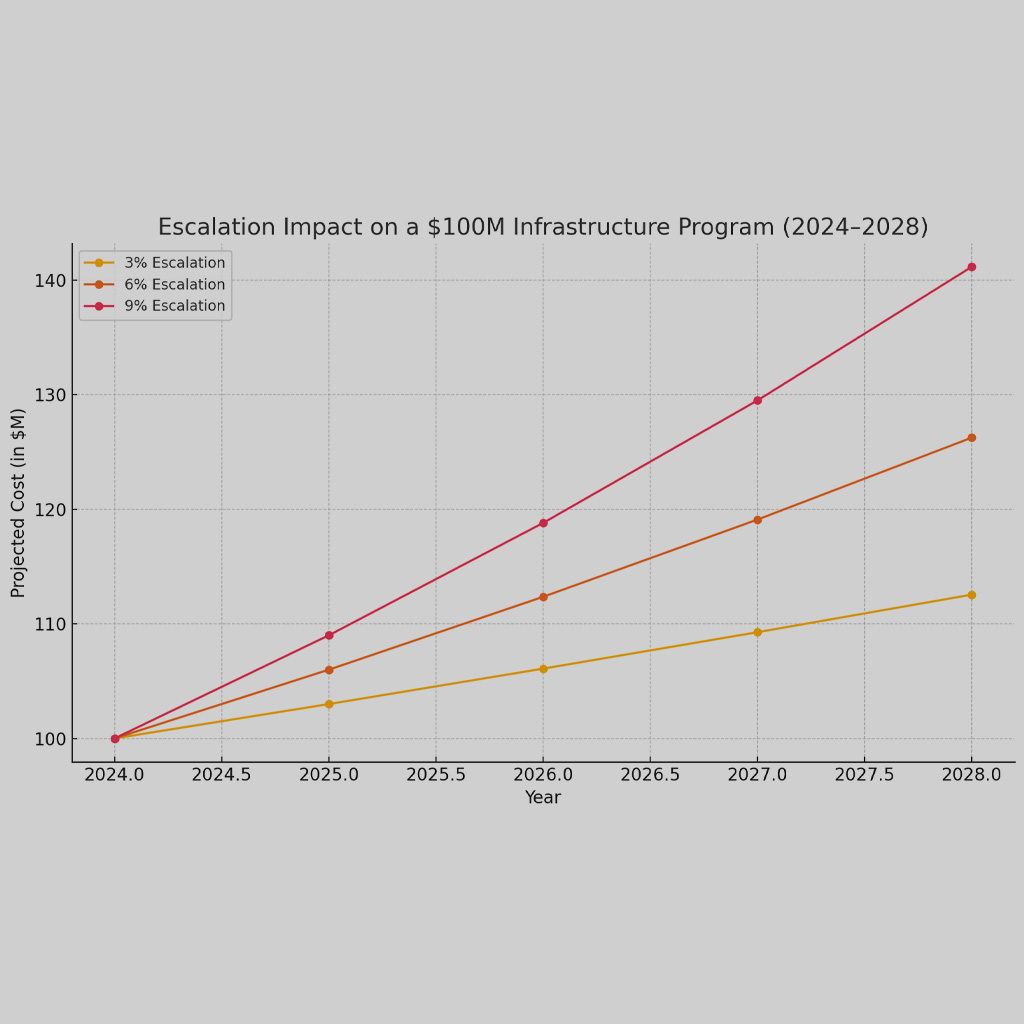The Importance of Starting Correctly on Capital Improvement Bond Programs
Starting correctly on capital improvement bond programs is crucial for ensuring successful outcomes. These programs involve significant investments and have long-term implications for communities, making it essential to lay a strong foundation from the beginning. Program control plays a significant role in achieving success by providing effective management and oversight. Additionally, setting clear design criteria and quality expectations helps maintain accountability throughout the process. Meeting submission dates is also crucial as it ensures timely progress and avoids potential delays or penalties. By prioritizing these aspects, project managers, government officials, and financial institutions can establish a solid framework for capital improvement bond programs.
Program Control: Ensuring Effective Management
Effective program control is essential for the successful management of capital improvement bond programs. By implementing program control measures, organizations can oversee and coordinate all aspects of the bond program, ensuring that it stays on track and achieves its objectives.
Implementing Program Control Measures
One crucial step in program control is establishing a program management office (PMO) to provide centralized oversight and coordination. The PMO serves as a hub for all activities related to the bond program, ensuring that goals and objectives are clearly defined and communicated. It also helps in developing a comprehensive program plan that outlines strategies for achieving success.
Another important aspect of program control is implementing effective communication channels and reporting mechanisms. This ensures transparency and enables timely decision-making. Regular meetings, progress reports, and status updates help keep stakeholders informed about the progress of the bond program.
Monitoring and Evaluating Program Performance
Monitoring and evaluating program performance is vital to identify areas for improvement and ensure compliance with established policies and procedures. Key performance indicators (KPIs) should be regularly tracked and analyzed to assess progress accurately. These KPIs may include metrics such as budget adherence, schedule adherence, quality standards, and stakeholder satisfaction.
Periodic program audits should also be conducted to evaluate compliance with established policies and procedures. These audits help identify any deviations or non-compliance issues early on so that corrective actions can be taken promptly.
In instances where issues or challenges arise during the course of the bond program, it is crucial to implement corrective actions and adjustments as necessary. This ensures that any obstacles are addressed promptly, minimizing their impact on the overall success of the program.
By implementing robust program control measures, organizations can effectively manage capital improvement bond programs, ensuring accountability, transparency, and successful outcomes.
Clear Design Criteria and Quality Expectations
Clear design criteria and quality expectations are essential components of capital improvement bond programs. By defining these criteria and expectations, organizations can ensure that projects within the program meet the desired standards and objectives.
Defining Design Criteria
To start, it is crucial to clearly define the scope, objectives, and requirements of each project within the bond program. This includes identifying the specific goals that need to be achieved and outlining any constraints or limitations. By doing so, project managers can establish a clear direction for the design process.
Establishing design standards and guidelines is another important aspect of defining design criteria. These standards help ensure consistency across different projects within the bond program and promote adherence to best practices. Engaging relevant stakeholders, such as architects and engineers, allows for their input and expertise in shaping the design criteria.
Setting Quality Expectations
Setting clear quality standards and benchmarks is vital to maintaining high-quality outcomes in capital improvement bond programs. Organizations should establish specific expectations for each project, including requirements related to materials, workmanship, functionality, and aesthetics.
Implementing quality control measures is crucial to ensure compliance with these established standards. Regular inspections and testing should be conducted throughout the project lifecycle to identify any deviations or deficiencies. Addressing these issues promptly helps maintain the overall quality of deliverables.
Regularly reviewing and evaluating project deliverables is also important in assessing quality. This allows organizations to identify any areas that may require improvement or additional attention. By continuously monitoring quality throughout the program, organizations can make necessary adjustments to ensure successful outcomes.
By defining clear design criteria and setting quality expectations from the beginning of a capital improvement bond program, organizations can ensure that projects meet desired standards while promoting accountability and successful results.
Meeting Submission Dates: Ensuring Timely Progress
Meeting submission dates is crucial for ensuring timely progress in capital improvement bond programs. By establishing realistic and achievable deadlines, organizations can keep projects on track and avoid unnecessary delays.
Establishing Submission Deadlines
Setting realistic and achievable submission dates for project deliverables is the first step in ensuring timely progress. These deadlines should take into account the scope of work, available resources, and any potential dependencies or constraints. It is important to communicate these submission deadlines clearly to all stakeholders involved in the bond program to ensure understanding and alignment.
Implementing a system for tracking and monitoring submission progress is also essential. This allows project managers to stay informed about the status of each deliverable and identify any potential bottlenecks or issues that may arise. Regular updates and progress reports help maintain accountability and provide an opportunity for timely intervention if necessary.
Consequences of Missed Submission Dates
Missing submission dates can have significant consequences for capital improvement bond programs. Firstly, it can impact the overall project schedule and timeline, leading to delays in completing critical milestones or even the entire program. This can result in increased costs, missed opportunities, and frustration among stakeholders.
Additionally, there may be potential financial penalties or loss of funding associated with missed submission dates. Many bond programs have specific requirements regarding timely delivery of project deliverables, and failure to meet these requirements can result in financial repercussions.
Furthermore, consistently missing submission dates can lead to a negative perception and reputation for the bond program. Stakeholders may lose confidence in the program’s ability to deliver on its promises, which can hinder future participation or support.
By prioritizing meeting submission dates, organizations can ensure timely progress in capital improvement bond programs while avoiding negative impacts on schedules, finances, and reputation.
The Role of Recourse and Project Management in Ensuring Accountability
Recourse mechanisms and effective project management play crucial roles in ensuring accountability within capital improvement bond programs. These measures help address non-compliance, resolve disputes, and promote successful project execution.
Establishing Recourse Mechanisms
To ensure accountability, it is important to define clear recourse mechanisms for addressing non-compliance or underperformance. This involves establishing a process for reporting and addressing issues that may arise during the course of the bond program. By clearly outlining these mechanisms, organizations can provide a framework for resolving disputes and conflicts in a fair and transparent manner.
Transparency and fairness are key considerations when implementing recourse mechanisms. All stakeholders should have a clear understanding of the process and feel confident that their concerns will be addressed appropriately. Regular communication and updates on the status of recourse actions can help maintain transparency throughout the program.
Effective Project Management
Effective project management is essential for ensuring accountability within capital improvement bond programs. Assigning qualified project managers with relevant experience and expertise helps ensure that projects are executed efficiently and effectively.
Implementing project management best practices is also crucial. This includes conducting regular meetings to review progress, track milestones, and address any challenges or risks that may arise. Progress tracking allows project managers to monitor performance against established goals and objectives.
Providing necessary resources and support to project managers is another important aspect of effective project management. This includes ensuring access to adequate funding, personnel, equipment, and technology needed for successful project execution.
By establishing robust recourse mechanisms and implementing effective project management practices, organizations can enhance accountability within capital improvement bond programs. These measures help address non-compliance, resolve conflicts, promote transparency, and ensure successful outcomes.
Conclusion: Starting Capital Improvement Bond Programs Correctly
In conclusion, starting capital improvement bond programs correctly is crucial for ensuring successful outcomes. By prioritizing program control, clear design criteria, meeting submission dates, and recourse mechanisms, project managers, government officials, and financial institutions can establish a solid foundation for these programs.
Program control measures provide effective management and oversight throughout the bond program. Clear design criteria and quality expectations help maintain accountability and ensure high-quality outcomes. Meeting submission dates is essential for timely progress and avoiding negative consequences. Recourse mechanisms address non-compliance or underperformance in a fair and transparent manner.
By following these guidelines, organizations can set themselves up for success from the beginning of capital improvement bond programs. This leads to improved project outcomes, stakeholder satisfaction, and overall program success.
At Front Line Advisory Group, we are pioneers in Capital Improvement Bond Management, leveraging unparalleled expertise and deep industry insights. Our mission extends beyond consultation – we empower our clients to realize the full potential of their investments, ensuring tax dollars are put to maximum use through astute Program Management Consulting. For more information or to commence your journey towards transformative bond management, reach out to us at info@frontlineadvisorygroup.com













